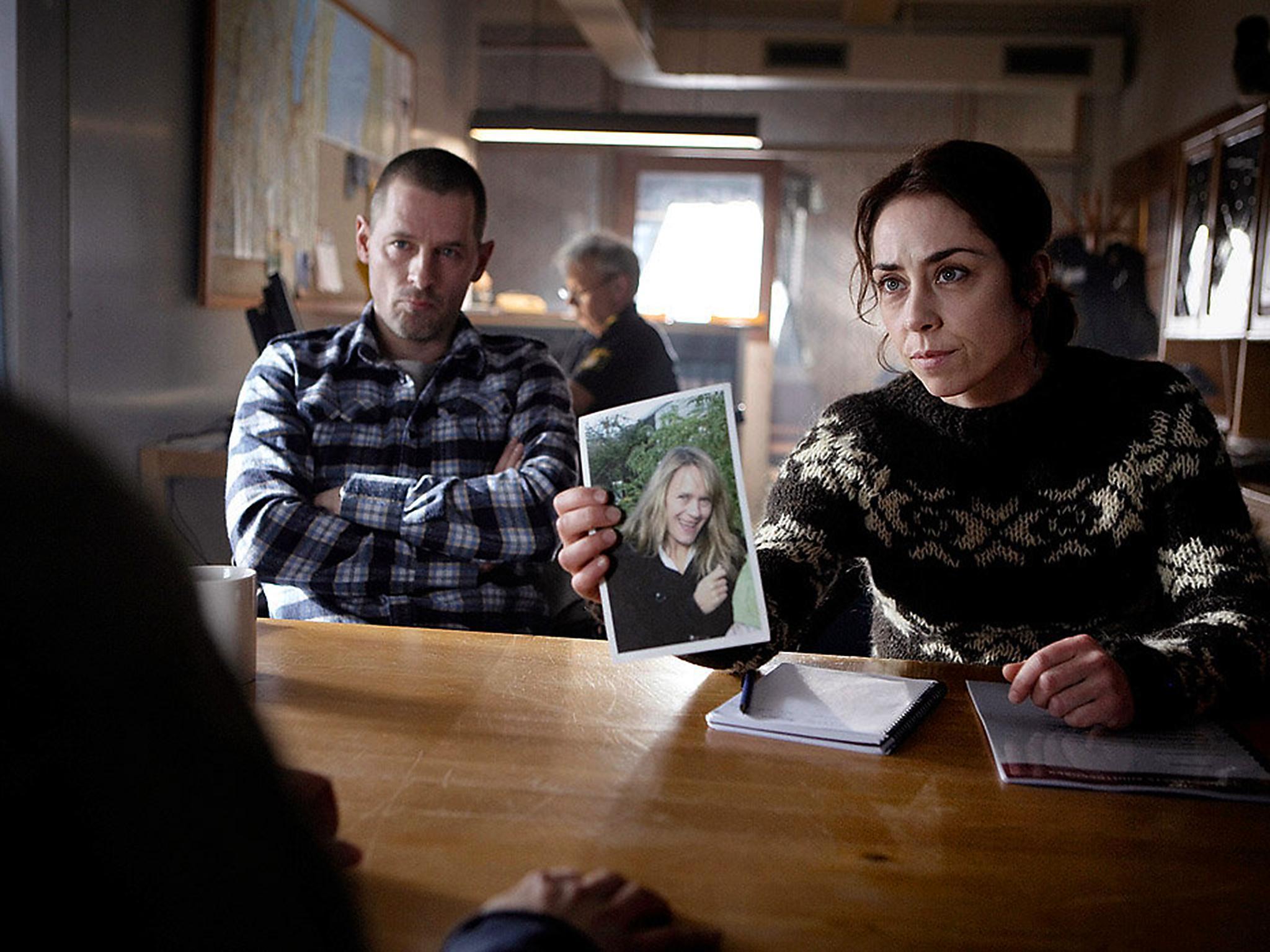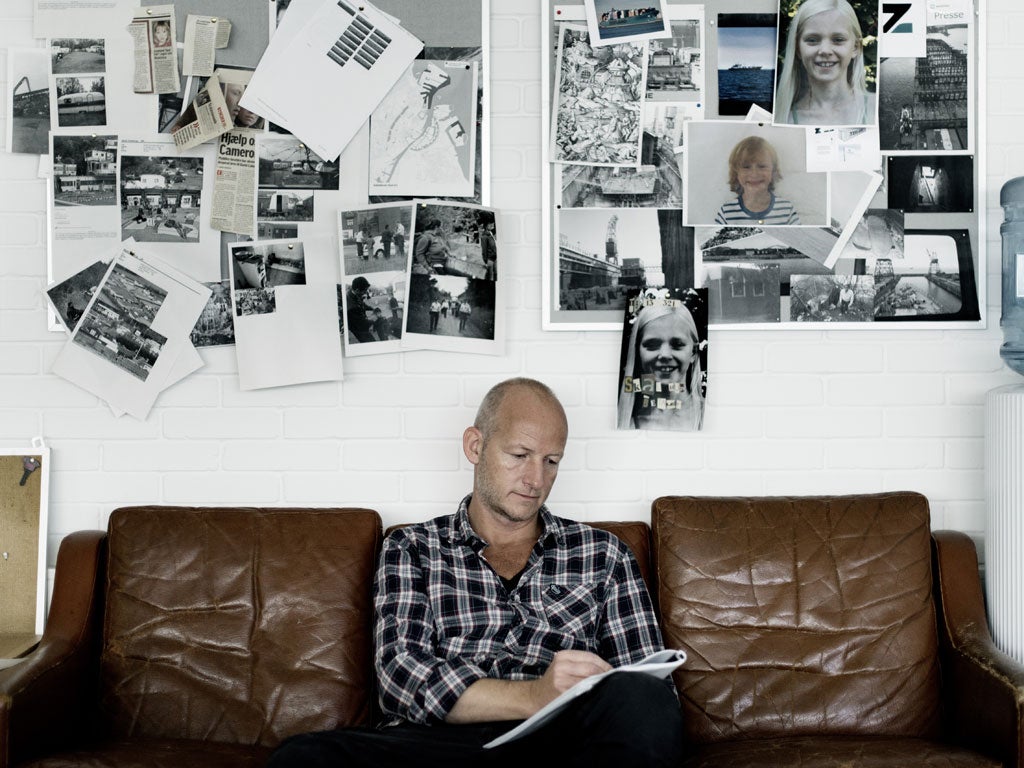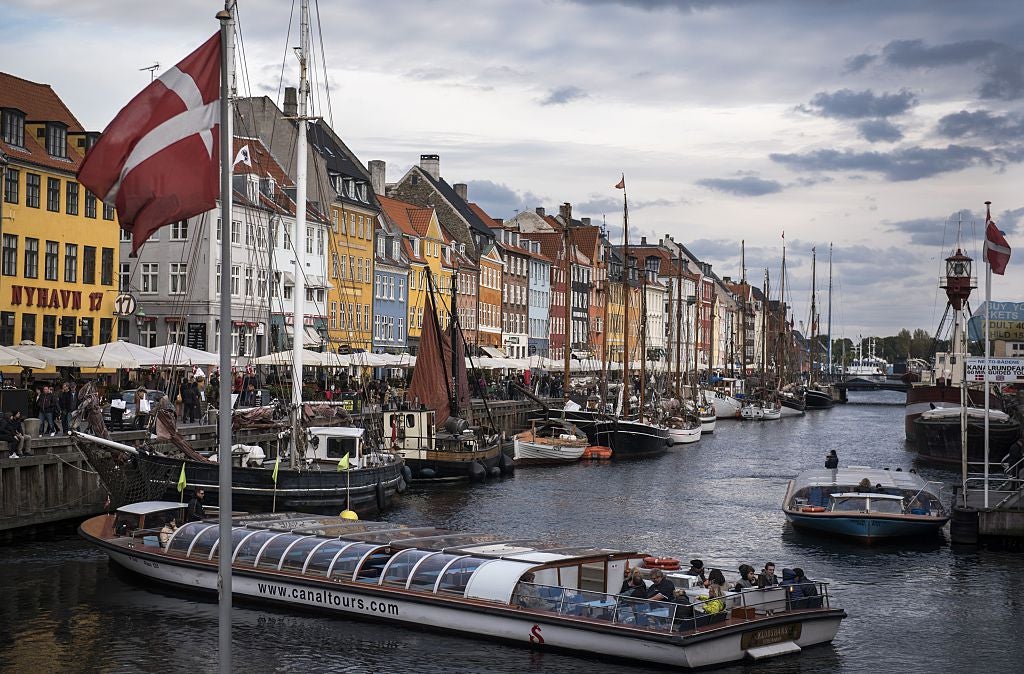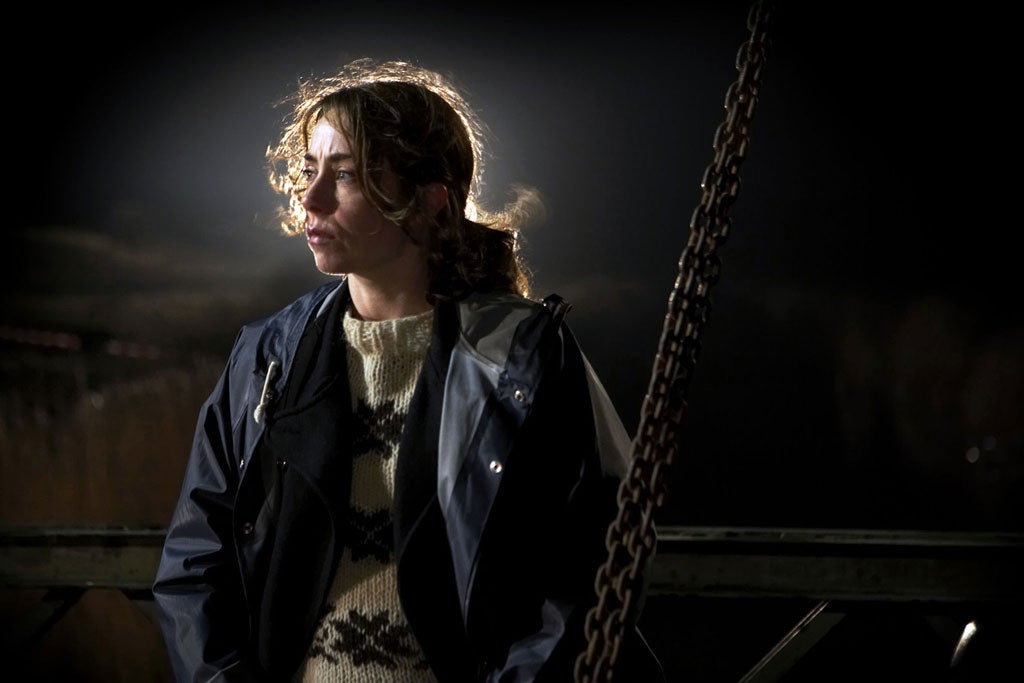Nordic noir: The star and creator of ‘The Killing’ on the roots of Scandi darkness
Why does Scandinavia inspire such uniquely dark TV drama? In the first of a three-part series, Andy Martin goes to Denmark to meet the star and creator of The Killing, and finds that the roots of Nordic noir are grimly steeped in suicide, porn, existential angst... and Brideshead Revisited

Your support helps us to tell the story
From reproductive rights to climate change to Big Tech, The Independent is on the ground when the story is developing. Whether it's investigating the financials of Elon Musk's pro-Trump PAC or producing our latest documentary, 'The A Word', which shines a light on the American women fighting for reproductive rights, we know how important it is to parse out the facts from the messaging.
At such a critical moment in US history, we need reporters on the ground. Your donation allows us to keep sending journalists to speak to both sides of the story.
The Independent is trusted by Americans across the entire political spectrum. And unlike many other quality news outlets, we choose not to lock Americans out of our reporting and analysis with paywalls. We believe quality journalism should be available to everyone, paid for by those who can afford it.
Your support makes all the difference.No reindeer, no snowflakes. Not a hint of blue or cream. Sofie Grabol, aka Sarah Lund of The Killing (Danish: Forbrydelsen), is wearing a black cashmere sweater and black trousers. This is Nordic noir land. In a café on the waterfront, in Copenhagen. The water is dark and cold and forbidding and you wonder what lies beneath the surface. She is wearing a purple nail varnish. Her lips are a slash of red on snow. Even her gum is black, or it would be if she were chewing any. Having started smoking aged 13, she gave up at 30 when she was pregnant, but then became addicted to nicotine gum for the next 15 years. “I’m just waiting for the old dependency to kick in any time,” she says.
Grabol would rather not be somebody’s archetype or icon. After playing detective Sarah Lund, she was at a conference with Sophia Helin, who plays detective Saga Noren in The Bridge, “and everyone wanted us to be this perfect tough woman, impossibly brave, impossibly wise, impossibly beautiful”. She laughs at the absurdity of it and shakes her head free of the responsibility of embodying a myth. “I can’t be that,” she says.
“It’s a paradox, but for me the whole idea of feminism is to get beyond gender. Otherwise you might miss all the beautiful nuances.” Which she has a lot of. She is fun and funny, the opposite of a prima donna, and about as wise and brave and beautiful as you can reasonably get without being utterly impossible.
I only really have one major complaint about Grabol: she has no plans to reprise her Sarah Lund role. No intention to make a widely anticipated (maybe, more correctly, “fantasised about” or “prayed for”) fourth series of The Killing. Fellow fans and Lund addicts, trust me: I tried to talk her round. Maybe I even, very slightly, succeeded. I mention that Soren Sveistrup, the series creator, happened to say, “I miss Sarah Lund”. And she says, “Oh really, he said that? That is interesting. I didn’t know that. ” Maybe there was a hint of something there, like the beam of Sarah Lund’s great torch (which she has a habit of whipping out) stabbing a light through the darkness.
“I was forever being asked about the ‘female role’. But in my mind what was interesting about Sarah Lund is not that she was a woman, but that she was a great character.” But there has to be a but. “But why would I go back? ” I give her about 10 solid reasons. “It’s like a divorce, ” she counters. “Maybe you still love someone and all, but really, would you want to do the same thing all over again?”
She concedes though that making The Killing was one of her all-time highs. “There was so much energy, ” she recalls. “I was having the time of my life and we were laughing so much. That’s the magic of it. Everyone was – what is the phrase? – in sync.” She even uses the word “joy”, not something often associated with Nordic noir.

Grabol gives full credit to the recently deceased director Birger Larsen, who shot the first few episodes, for inventing a whole new look and feel to crime drama which set the tone for the series. She dismisses the clichés about Nordic being “moody” and “gloomy”. “But it really was darker than the average show.” She means this literally. “We had a lot of complaints from people who were having to turn up the brilliance on their TV sets. ”
She is treated respectfully, but without undue deference by the café staff. Nobody comes up and asks her for her autograph or selfie. She not only turns up on time to our rendezvous but gets there before I do. She is a star but has no star mentality. “I was always very bad at behaving like a star. And anyway there are no stars in Denmark. We have a flat society. It’s in our DNA.”
She nibbles at a herring and salad sandwich. Very Danish. She keeps fit, she says, by jogging a mere 1.5km most days, down to the waterfront and back to her flat. “Very slowly. I run like an old lady. And hope I don’t bump into anyone.”

Watch Apple TV+ free for 7 days
New subscribers only. £8.99/mo. after free trial. Plan auto-renews until cancelled

Watch Apple TV+ free for 7 days
New subscribers only. £8.99/mo. after free trial. Plan auto-renews until cancelled
If this were Hollywood, she would be surrounded by a cordon sanitaire of agent, publicist, make-up artist, fitness instructor, and personal New Age guru. As it is she is gloriously free and unconstrained. And this must be part of the “magic” of the specifically Nordic strain of noir.
Grabol describes herself as an existentialist and quotes Kierkegaard’s “to dare is to lose your footing, not to dare is to lose your self”. She considers herself (and Lund) to be a misfit, “in terms of authority, society, family”. Not just the villain, she says, but “the hero, the seeker-after-truth, must contain the darkness. There is a focus inward.” In this way The Killing is like Hamlet (and Elsinore is only a couple of stops away from Copenhagen on the train). “It’s not just Who done it? it’s more Who-am-I? and What is my purpose in life?”
The word “angst” comes up, as it inevitably must. As does the concept of “romantic anomie, (usually translated as “normlessness”, from the Greek, meaning “without laws), from Durkheim’s superior book on suicide. Normlessness is the norm in Copenhagen. But you don’t have to commit suicide. Grabol is the opposite of Ophelia, who drowns herself. There is a brilliant scene towards the end of the third series of The Killing in which Sarah Lund is shot pointblank but, shrewdly wearing a bulletproof vest, gets to take out the bad guy. And, by the same token, blow a hole through the horrendous tradition, exemplified by Emma Bovary (Flaubert), Anna Karenina (Tolstoy), Hedda Gabler (Ibsen), and Miss Julie (Strindberg) in which a female protagonist is called upon to (a) have sex then (b) annihilate herself, and her only choice is poison, train, gun, or razor. It’s like Grabol is taking revenge on literature.
Probably not on Sveistrup, the creator of The Killing, though. I meet him in the clean, well-lit offices of his production company, which are only a short walk away from the waterfront. “I used to have so much fun every week finding another deep, dark, dripping dungeon for Sarah Lund to have to fight her way out of,” he says, with a hint of a semi-sadistic bad guy chuckle. “Sarah Lund is her torch.” Famously he never let anyone know who-had-dun-it until right at the end. So they were kept guessing too. But did he know? He says he was guided by The Smiths song, “Barbarism begins at home. ”

Not his current home, though, where things are well and he is due to leave the city the following day to take his kids to Legoland. It was not always thus. For Sveistrup, all Nordic noir drama springs out of a sense of loss. His family was “dysfunctional” and his mother committed suicide when he was 21. “A family being… amputated, that was the beginning,” he says. “I could have wasted my life going to a psychoanalyst but I did this instead.” This being to write revolutionary television. The way he conceived Forbrydelsen was, broadly, anthropological; not in terms of individuals but of “tribes”. There is a single killing, but the effects are felt throughout a community or several communities: a family, a school, a whole political apparatus. “It’s like tossing a stone in a lake and watching the ripples radiate outwards,” he says. “It’s like Oedipus and the whole city is hit by a plague, and can only be saved by exposing the truth. ”
Sveistrup was born in 1968, so he is a child of the Sixties, but it is late Sixties. The flower in flower-power is starting to wilt and die. This is not the first-phase, super-charged Sixties, all Minis and Maharishis and marijuana-perfumed Haight Ashbury. This is not the era of Woodstock, but of the corpses of Altamont, with a cortege of Hells’ Angels. And the rise of porn.
I’m drinking coffee and Sveistrup is drinking hot chocolate. We are surrounded by books called Dansk Porno and Scandinavian Blue. Which are research material. Sveistrup is no hippy, the hair tending more toward minimalist or degree zero. He was brought up not in Copenhagen but on a small island, Thuro, a few square kilometres with only a couple of thousand inhabitants, but even so he clearly recalls as a young boy close encounters with graphic sexual images at every turn, in the sweetshop, displayed among Smarties and bubble-gum, or in the petrol station, next to engine oil. There was no innocent pre-sexual idyll for him. Denmark was the land of pornucopia.
The Minister of Justice who, for the first time in history, signed off on the Porn Law in Denmark back in 1969, was not some wild-eyed, long-haired aficionado of Oz and Lady Chatterley’s Lover. He was a straight-laced conservative who thought that, by making it legal, people would lose interest and porn would gradually fade into a distant memory. “He got that a little bit wrong,” says Sveistrup.
The fascinating thing about the mood and mentality of the time is that there really was a sense of innocence and enthusiasm in the air. A genuinely “utopian” moment. The first full-on sexual intercourse film, orgies on stage, and one show, he remembers, “involving a woman and a pig attended by a lot of stars and good Copenhagen citizens”. Then the gangs moved in and the porn wars began and thus was born the troubled, strife-riven, Scorsese-style society at the core of the new television series he has been writing, working title ”Kings”.
“There is a sexual tolerance now that we can thank the Seventies for,” he says. “But it was a disaster.” Although not a believer Sveistrup often thinks in religious terms. “It was like – what do you say in English – the Fall?” he says. The expulsion from paradise. “Before Sergeant Pepper, it was still pure,” he says. Then noir takes over. “Copenhagen was our Sodom and Gomorrah,” he said. Noir is post-lapsarian. Nordic noir begins when the Scandinavian brand of the social democratic liberal idyll is shattered. “Back then even feminism was pro-porn, we thought it was all about expressing your desires openly.” But there is no liberation without coercion. Sex is no longer some blissful exercise in attaining inner peace Kama Sutra-style, but rather an “enigma” (one of his favourite words).

Sveistrup is a post-romantic. He said he had to write The Killing because he couldn’t get a proper job writing for the movies. He studied history and literature at the University of Copenhagen and then went to film school and signed up with the Danish television company DR. He had a strong sense that “television was a second-class citizen”, but that it could and should be the equal of film. “It should be epic, like a Clint Eastwood/Sergio Leone spaghetti Western,” he says.
There is a vicious circle linking The Killing and Kings, almost a palindrome. The Killing is underpinned by the hermeneutic code: an act of extreme sexual violence has occurred; as the series progresses towards an end, we work our way back towards the beginning to find out the truth. “We would often film Sarah Lund from behind, in the darkness, because more than anything you would want to see her face,” says Sveistrup. It’s a fundamental desire, to know, to solve the mystery, to resolve the “enigma”. But then we are into the realm of what Freud called “epistemophilia”, we need to peer through keyholes, we want to see not just the face but the impossibly naked body in which everything is revealed and it is this very impossibility that drives us in the direction of sexual violence.
There is also an obscure connection between Sveistrup and Lee Child, the Anglo-American author of the Jack Reacher thrillers. Sveistrup was deeply influenced as a child by watching Brideshead Revisited on Danish TV (with subtitles). “I loved the melancholy,” he recalls. And the pacing, where one short (Evelyn Waugh) novel is turned into 11 leisurely episodes, is found again in The Killing. In the production team behind that series was none other than Lee Child, in his previous incarnation as Jim Grant, television filmmaker.
I said I thought Lee Child would be pleased about having a small part in the genealogy of The Killing. “Of course, we didn’t have a lot of choice, ” says Sveistrup. “There was only one channel in those days. ”
Next week, continuing his quest to understand what lies at the heart of Nordic noir, Andy Martin crosses the bridge (that really, really famous bridge) from Copenhagen to Malmo to meet Sweden’s Hans Rosenfeldt and Sofia Helin
Andy Martin is the author of ‘Reacher Said Nothing: Lee Child and the Making of Make Me’ (Bantam Press, RRP £18.99). Andy Martin also teaches at Cambridge University
Join our commenting forum
Join thought-provoking conversations, follow other Independent readers and see their replies
Comments